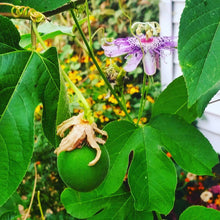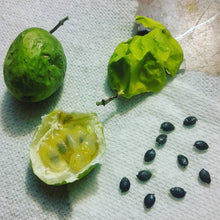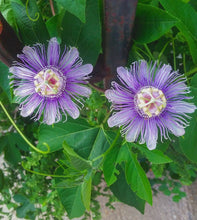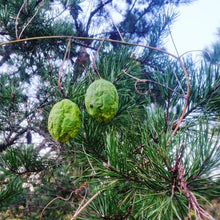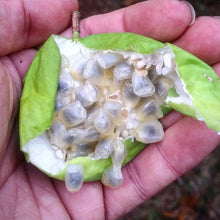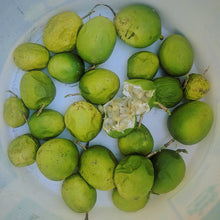Northern Maypop Passionfruit
Regular price
$4.25
Sale
Passiflora incarnata
Origin: Mid-Atlantic U.S.
Improvement status: Wild
Seeds per packet: ~20
BOTANICAL SAMPLE - NOT GERMINATION TESTED
Life cycle: Perennial
The maypop is the only passionfruit/passionflower native to the temperate US East Coast, with a natural range stretching from southern New Jersey to Florida in the East and from Texas to Kansas in the West. It has naturalized in other parts of the country and in Europe. Popular as an herbal sleep aid and anxiety treatment (usually in the form of a tea made from the leaves), maypops also produce a delicious fruit which ripen in autumn and follow one of the most beautiful flowers on the planet. A perennial vine, it dies back to the ground each winter and grows back bigger each summer. It benefits from having a trellis or some other structure (like a tree) to climb, which increases fruit production, but they will also sprawl along the ground and grow a foot or two into the air using its own vines as support, if no other support is provided. The sweet-and-sour fruit pulp (with a flavor reminiscent of pineapple, lemon, tropical passion fruit, caramel, and banana, though entirely unique) can be made into jam or jelly, eaten raw, or used as a flavoring for homebrews, kombucha, wine, or drinking vinegar. You can even press the seeds for a tasty edible oil if you grow enough!
Our seeds come from populations at the northern reaches of its "natural range" (which was likely extended this far north by Native Americans many centuries ago), in southern New Jersey and Delaware. We've begun including seeds from 2nd generation improved selections from our breeding program. This means there's a strong likelihood some of the plants will be able to thrive — and produce tasty fruit — far north of that. We have heard reports of growers having success (mainly in protected spots, such as next to a house) as far north as Maine and even into parts of Canada.
You can tell the fruit are ripe by holding one to your nose and sniffing. The luscious tropical fruit scent is unmistakable. If you can't smell it, you either can't smell, or they're not ripe. Wrinkly skin is a tell-tale sign, along with a softness to the fruit (though occasional fruits will be fully hollow). They are quite firm before they ripen. The flesh around the seeds should be yellow, not white, for full ripeness. Before it does ripen, the flesh is very sour, and at this time the juice can be used as a substitute for lemon juice. But the best rule of thumb for finding ripe maypops is this: only harvest them off the ground. As soon as they ripen they fall to the ground, and often continue ripening there for days (until the critters find them).
Note on germination: Whenever we've sent these seeds away for germination testing, the test comes back a few weeks later with a low number. In our experience, even seeds from lots that test very low will end up with a much higher germination rate as long as they are planted in a good seed-starting medium and kept moist for up to two months. Patience is necessary. Many will germinate much sooner than that, but they germinate over time. If you end up with no seeds germinating, we will be happy to replace them at no charge. But even one successful sprout is enough for a lifetime of maypops!
GROWING TIPS: We like to start these in flats, but they can probably be direct seeded as well. As mentioned, they can take a while to sprout. Plants in good soil with something to climb have been known to bear fruit in their first year! Established plants will quickly begin to spread via underground roots, so only plant where you don't mind them taking over (or can mow around them to keep them contained). If you plant near a tree or a drainpipe, they will reward you with copious fruits for a long time. Since vines die back to the ground, you can pull down a whole vine after frost to get the rest of the fruit. The vines have been known to grow over 30 feet in a season.







